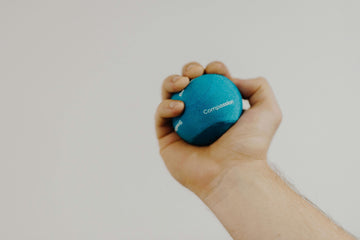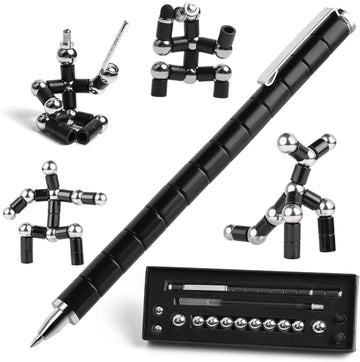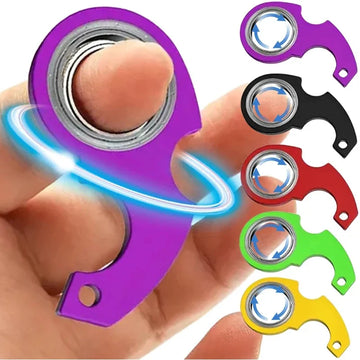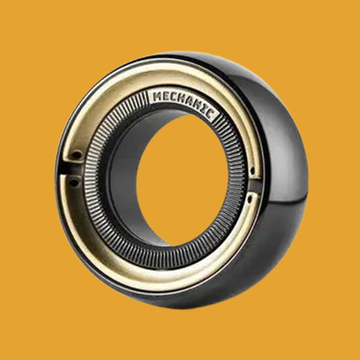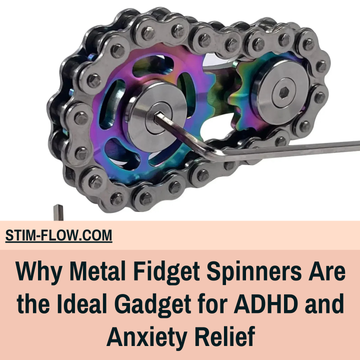When it comes to finding the ideal stim toy, knowing what to look for can make a huge difference in how well it suits your needs. Stim toys—short for "stimulation toys"—are incredibly popular tools designed to help manage stress, increase focus, and provide a comforting sensory experience. With so many options on the market, it can be challenging to select the right one. In this guide, we'll explore essential factors to consider, helping you find the perfect stim toy that matches your needs, preferences, and lifestyle.
1. Identify Your Primary Need for a Stim Toy
Different stim toys offer varying benefits. Start by asking yourself what you hope to achieve by using one:
- Relieving stress and anxiety: If you’re looking for a way to relieve stress, consider toys that allow for repetitive movements like spinning or squishing, as they can provide a calming rhythm.
- Improving focus and concentration: If your main goal is to improve concentration, choose toys that encourage small, repetitive movements without being too distracting.
- Managing sensory needs: If you find comfort in certain tactile sensations, opt for toys that provide a range of textures or physical sensations to explore, helping you feel more grounded.
Identifying your primary need will guide you toward the most suitable type of stim toy.
2. Consider the Type of Sensory Stimulation You Prefer
Stim toys come in various designs, each providing different types of sensory feedback. Take time to understand the types of sensations that feel most comforting or engaging for you. Here are some types to consider:
- Tactile feedback: Toys with different textures (smooth, rough, soft, etc.) can provide a grounding experience for those who benefit from touch-based stimulation.
- Auditory feedback: Some people find sounds, like clicking or popping, relaxing or satisfying. However, keep in mind that not all settings are ideal for noisy toys.
- Visual feedback: Toys with vibrant colors, flashing lights, or intricate designs can provide visual stimulation, which is particularly appealing if you’re visually inclined.
- Kinetic or movement-based: Toys that require hand movements, such as spinning or flipping, can be particularly helpful for staying engaged or focusing during long periods of concentration.
Choosing a toy with the right sensory feedback will make it a more effective tool for your specific needs.
3. Think About Portability and Discreetness
Another important factor is where you plan to use your stim toy. If you’ll mostly use it at home, you may have more flexibility with the size and type of toy. However, if you need something you can take to work or other public places, consider:

- Size and weight: Smaller, lighter stim toys are easier to carry in your pocket or bag, making them convenient for on-the-go use.
- Noise level: If you’ll be in shared spaces, look for quieter options to avoid causing distractions.
- Ease of storage: Compact toys are also easier to store away, ensuring they’re always available when you need them without taking up too much space.
Choosing a portable and discreet stim toy will allow you to use it comfortably in various settings, whether at home, in the office, or during your daily commute.
4. Assess Durability and Maintenance Needs
Stim toys should be durable enough to withstand frequent use, especially if they’re a part of your daily routine. Depending on how you’ll use the toy, it’s important to evaluate its durability and the type of maintenance it may require:
- Materials: Choose stim toys made from sturdy materials like silicone, rubber, or metal, as they’re generally more resistant to wear and tear.
- Ease of cleaning: Certain stim toys may require regular cleaning, especially those made from softer materials that collect dust or dirt easily.
- Moving parts: Toys with moving or detachable parts may require occasional maintenance. Make sure to select one that’s easy to repair or replace if any parts break.
By selecting a durable, easy-to-maintain toy, you can ensure it remains a long-lasting addition to your toolkit.
5. Evaluate Your Budget
While stim toys come in a range of price points, setting a budget can help narrow your options. Consider how much you’re willing to spend and what features are most valuable to you. While higher-priced stim toys often come with added features or enhanced durability, many affordable options provide great benefits without breaking the bank.
Consider exploring a range of toys and experimenting with different types until you find one that perfectly fits both your needs and budget. Keep in mind that the effectiveness of a stim toy is often more about how well it meets your personal requirements than about its price tag.
6. Try Before You Buy (If Possible)
Whenever possible, test different types of stim toys to see what works best for you. Many stores offer hands-on opportunities to try stim toys, allowing you to experience the sensory feedback firsthand. This can help you better understand what kind of stim toy might fit your needs and preferences without committing to a purchase immediately.
Alternatively, if you’re buying online, look for options that come with return policies or customer reviews. Reviews can offer valuable insights from other users with similar needs and help you make a more informed decision.
7. Consider Any Sensory Sensitivities or Specific Requirements
Certain stim toys may feel overwhelming for those with sensory sensitivities. For example, toys that are too noisy, too bright, or overly textured might not be suitable for everyone. Here are some tips for those with specific sensory requirements:

- Select neutral colors if you’re sensitive to bright lights or colors.
- Look for low-noise options if sounds can be overstimulating.
- Opt for simple designs with fewer sensory triggers if too much stimulation can feel overwhelming.
By choosing a stim toy tailored to your sensory preferences, you’ll likely find it a more comfortable and effective addition to your daily routine.
8. Be Open to Trying Different Options Over Time
Your needs may change over time, and a stim toy that suits you today may not always be the perfect fit in the future. Be open to experimenting with new options as your preferences evolve. Some individuals find it helpful to have a variety of stim toys available to address different needs as they arise, such as switching between a tactile stim toy for stress relief and a visual one for enhanced focus.
Final Thoughts
Choosing the right stim toy is a highly individual process. By taking the time to evaluate your needs, preferred sensory feedback, portability, durability, budget, and sensory sensitivities, you’ll be well-equipped to find a toy that serves as a valuable tool in your daily life. Remember that it’s perfectly fine to experiment with a few different types before finding the one that’s just right for you. Your ideal stim toy should feel natural, satisfying, and supportive, providing you with a trusted companion for managing stress, enhancing focus, or simply bringing you moments of joy throughout the day.
By following these tips, you can confidently choose the perfect stim toy tailored to your unique needs.

